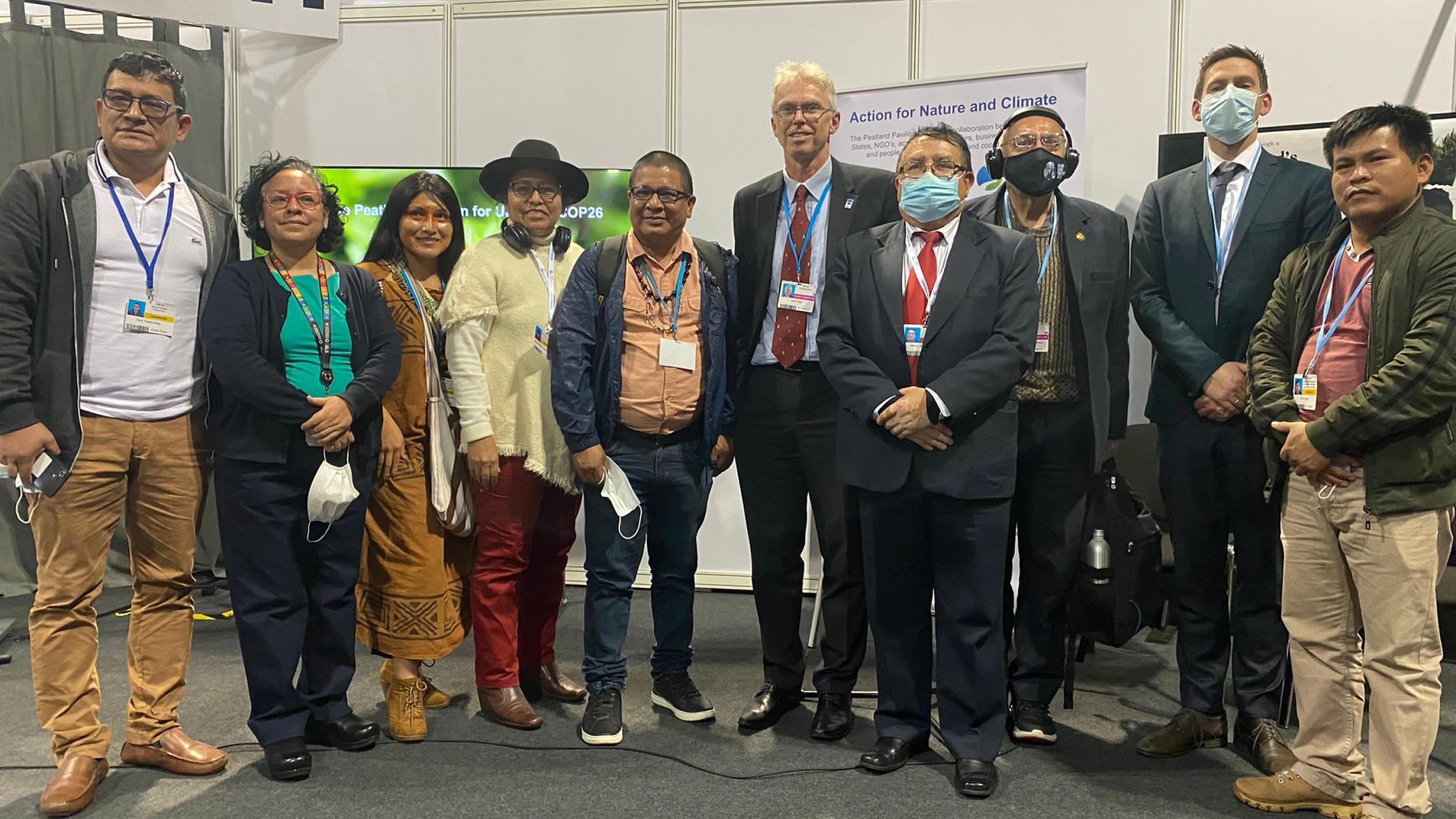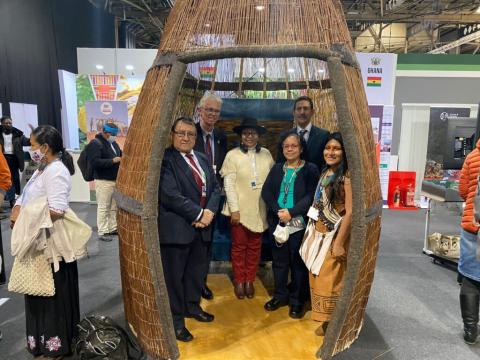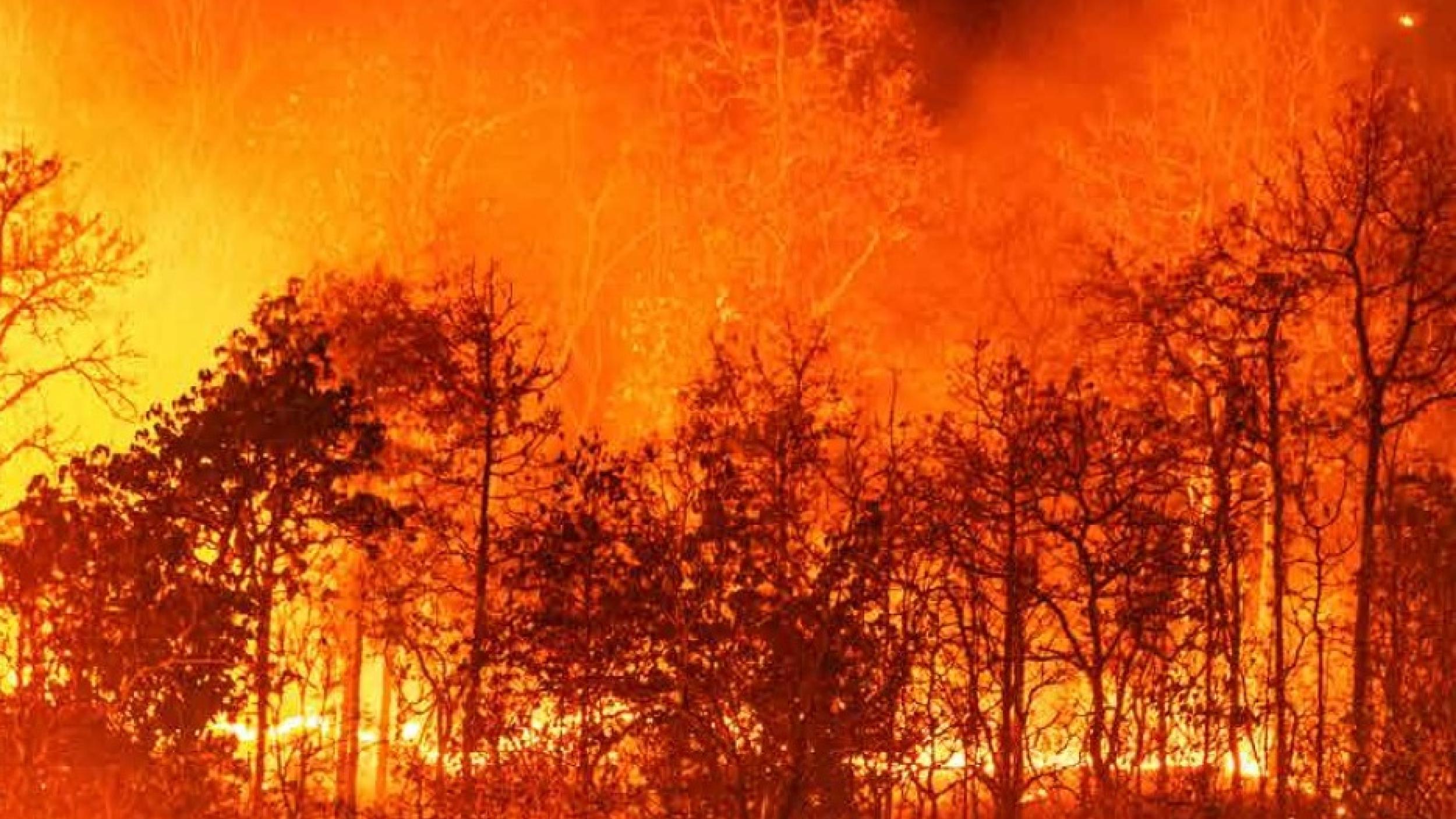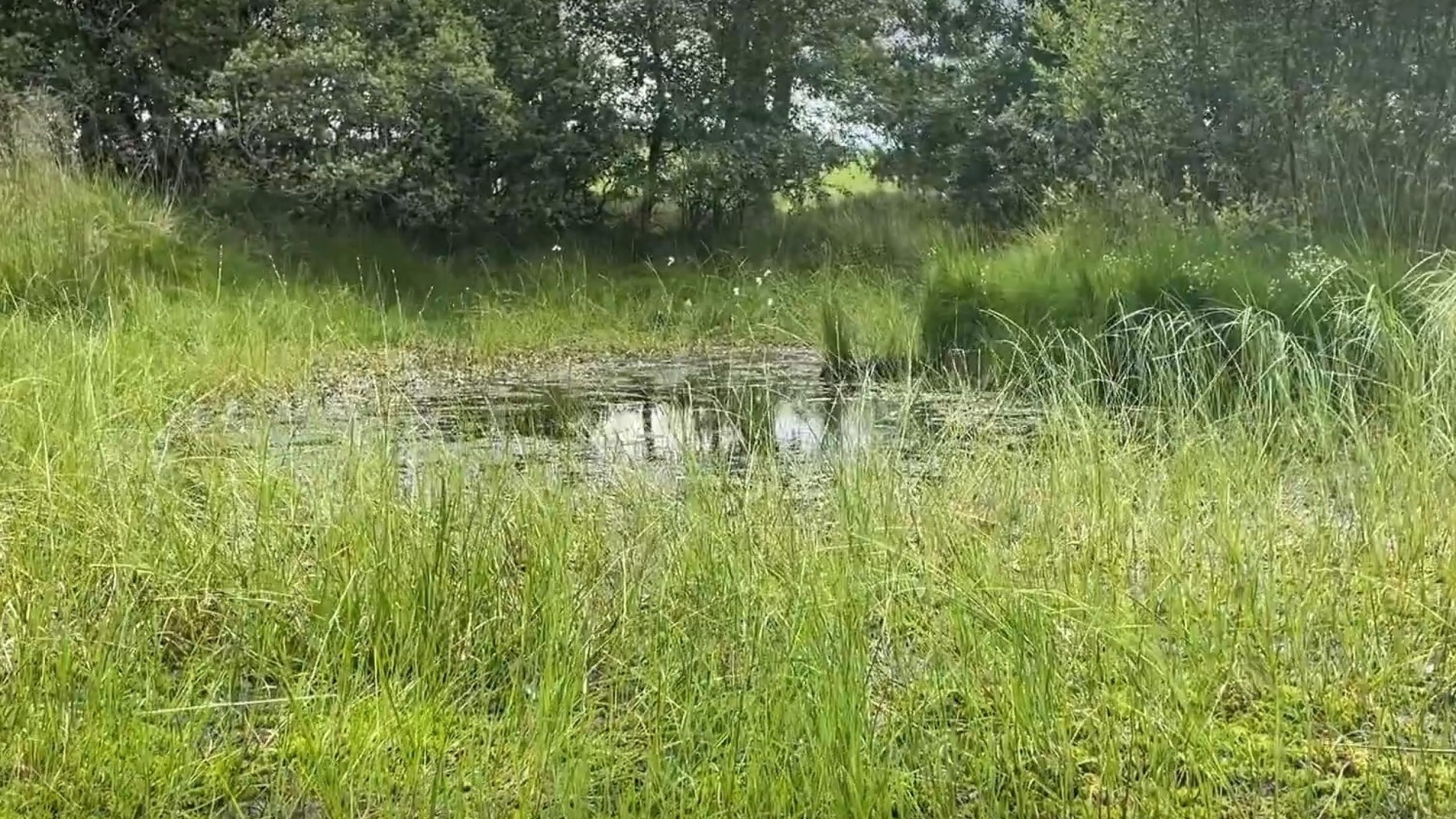
Peru at the Peatland Pavilion
Theme
Peru is on a strong path of peatland protection. On 6 May 2021, Peru achieved a significant milestone by approving a decree on the multisectoral and decentralized management of the country’s wetlands. The decree bans the commercial extraction of peat, while allowing peat to be used for domestic purposes and traditional activities. In July this year, Peru committed to join the International Tropical Peatlands Centre (ITPC) and to include peatlands in their Nationally Determined Contributions (NDCs) during the high-level Ministerial event, part of the 4th Global Peatlands Initiative Partners meeting.
Following these momentous steps, Peru had a significant presence at the Global Peatland Pavilion at the UNFCCC COP26 in Glasgow, Scotland. Co-developed by the Global Peatlands Initiative (GPI), together with UN Environment Programme (UNEP), Wetlands International, Scotland’s Rural College (SRUC), University of East London (UEL), The Succow Foundation, partner of the Greifswald Mire Centre (GMC), National Trust for Scotland and the IUCN UK Peatlands Programme, the Global Peatland Pavilion was both a physical and virtual space bringing together peatland practitioners, researchers, policymakers, enthusiasts and other stakeholders from around the world to share knowledge, experience and insights on peatland protection, restoration and sustainable management globally.
Peru participated in five sessions at the Peatland Pavilion, both virtually and in person. Minister for the Environment, Rubén José Ramírez Mateo, participated in the opening session of the Pavilion, and shared his thoughts on the significance of Peru’s decision to include peatlands in their NDC during the session Peatlands in climate commitments – Exchange of experience on NDC and Long-Term Strategies. He highlighted the efforts of the Ministry for the Environment (MINAM) to raise the profile of peatlands and to transition towards a decentralised and multi-sectoral approach to their sustainable management across Peru’s three major biomes – the Amazon, the Andes and the coast. He also acknowledged the role of the GPI in facilitating workshops for peatland knowledge exchange, which have contributed to Peru’s peatlands strategy.
The Ministry for the Environment (MINAM) also hosted a session in collaboration with the Indigenous People’s Platform to face Climate Change, underlining the crucial role of indigenous knowledge and involvement in the protection of peatlands and the fight against climate change. The session showcased indigenous perspectives and noted that environmental problems related to the degradation of peatlands, including climate change and water management, are experienced differently by indigenous communities, and especially women, threatening food security among other things. The Vice Minister for Strategic Development of Natural Resources, Alfredo Mamani, thanked Indigenous organisations for their vital contributions to environmental governance, and celebrated the public consultation with indigenous communities during the recent drafting of climate change legislation, one of the first examples of such collaboration. His Excellency Mr Mamani emphasised the government’s recognition of the value of indigenous knowledge and reiterated its commitment to learn from indigenous communities.

Speakers from the session The Indigenous People’s Platform to face Climate Change in Peru pose in the Global Peatland Pavilion’s iconic teardrop, constructed from materials grown sustainably on peatlands. Photo credit: Julie van Offelen
During the sessions Technology and data collection for peatlands management and Leveraging MEA Synergies: Peatland protection and restoration for climate outcomes, Dr José Álvarez Alonso, Director General of Biodiversity at the Ministry for the Environment, gave an overview of Peru’s peatland location and mapping, their uses and threats, and recognised the importance of Multilateral Environmental Agreements (MEAs) such as the Ramsar Convention, the Convention on Biodiversity (CBD) and the High Ambition Coalition as valuable tools in Peru’s efforts to protect peatlands from threats such as construction and mining, and to achieve the goals of the 30by30 Initiative. He spoke of the importance of creating and leveraging synergies between areas of work on wetland conservation including biodiversity, climate protection and resources for local communities.
Furthermore, Peru was represented in the sessions Activating Stakeholders in Peatland Restoration – Successes and Failures and Accelerating Peatland Action through NDCs. The messages from Peru in both sessions highlighted the potential of the private sector in contributing to peatland preservation. Jorge López-Doriga showcased the potential of leveraging the market economy to valorise peatlands and their flora, competing with the economic drivers of deforestation and degradation, as exemplified by Amarumayu, a line of natural juices of the AJE company made from Amazonian fruits and an environmental movement. Amarumayu also recognises indigenous communities as the true guardians of the forests and works with them to empower and learn from them about working with and protecting the ecosystems they work in. At a state level, Berioska Quispe Estrada, from MINAM, spoke of the state–private sector cooperation for climate goals, namely the Permanent Driving Group for the implementation of Peru’s NDC, made up of representatives from industry and the private sector. She emphasised the potential of the private sector to implement up to 85% of the mitigation and 13% of the adaptation actions that comprise the NDC, and the absolute necessity to engage with private sector actors for effective progress. As a case in point, several successful cases implemented by the private sector were presented, represented by the National Society of Industries and the National Society of Mining, Petroleum and Energy, emphasizing their initiatives to accelerate climate actions focused on nature-based solutions.
Peru has the largest expanse of peatlands in Latin America and the carbon they store represents more than half the carbon stored in the country’s above-ground biomass. Their participation in such a wide range of sessions at the Global Peatland Pavilion reflects their broad and committed approach to protecting and restoring these ecosystems. As one of the GPI’s four country partners, along with Indonesia, the Democratic Republic of Congo and the Republic of Congo, Peru is a global leader in peatland protection, and its strong participation in the UNFCCC COP26 Global Peatland Pavilion is a clear demonstration of this leadership.
Dianna Kopansky, Global Peatlands Coordinator for UNEP, commented: “Peru is a key GPI partner with its abundance and diversity of peatlands and its unique approach to conservation and collaboration. We are happy to be working with Peru and its partners on their projects to integrate peatlands into critical policies and plans, including in their NDCs.”
We thank all the speakers and organisers from Peru – those mentioned and many more – who helped to make the Global Peatland Pavilion such a success. In addition to the audiences physically present in Glasgow, the sessions in which Peruvian representatives participated were attended live by over 1,250 people, while 135 people followed the Global Peatland Pavilion sessions online from Peru.
The recording of the sessions will be available soon and don’t forget to take a tour in our virtual peatland pavilion to find a broad range of content on Peruvian peatlands : https://storage.net-fs.com/hosting/6147066/7/
Further resources:
Peru’s progress in addressing climate emergency presented at COP26 (in Spanish)
Minister of Environment highlights private sector’s contribution to climate emergency efforts (in Spanish)
Peruvian government decree on wetlands and peatlands (in Spanish)
Report: What do we know about Peruvian peatlands?
Landscape News article: Peru’s peatlands are beginning to share their secrets – and policymakers are listening
Explore other resources
How to monitor peatlands holistically … and practically
Sep 30
Zombie fires are ravaging peatlands in France
Sep 30
Standardising what we measure in peatlands research
Sep 30



